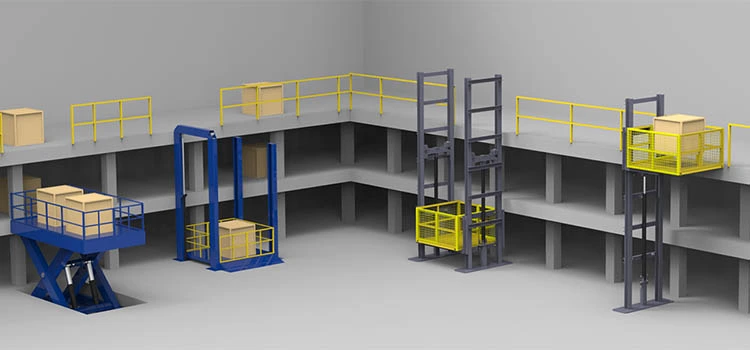London Lift Company: Trusted Professionals for All Your Upright Transport Requirements
London Lift Company: Trusted Professionals for All Your Upright Transport Requirements
Blog Article
Exploring the Globe of Elevators: Typical Problems Encountered by Different Lift Mechanisms
As we browse through the upright transportation systems of contemporary buildings, elevators stand out as an important element of our daily lives. From hydraulic elevators to traction systems and machine-room-less designs, each lift kind comes with its set of typical issues.
Hydraulic Lifts
Hydraulic elevators, frequently chosen for low-rise structures, make use of fluid pressure to regulate the activity of the elevator auto (lift repair companies). This device involves a hydraulic pump pressing oil into a cyndrical tube, causing the lift to relocate the preferred direction. While hydraulic elevators are known for their quiet and smooth procedure, they do include their very own set of usual problems
One common problem with hydraulic elevators is oil leakage. In addition, concerns with the control system, such as faulty valves or a malfunctioning pump, can create disruptions in the elevator's activity.
Routine maintenance and timely repairs are important to guarantee the smooth functioning of hydraulic lifts. By resolving these usual concerns proactively, building owners can lessen downtime and ensure the safety and performance of their vertical transportation system.
Grip Lifts
When thinking about vertical transportation systems in buildings, one more usual type other than hydraulic elevators is the grip elevator. Traction elevators operate utilizing a system of ropes and weights that relocate the lift car by clutching onto the hoist ropes. This system enables smoother and faster upright transportation compared to hydraulic systems.
Among the typical problems faced by traction elevators is rope wear. The constant movement of the ropes within the grip system can lead to deterioration gradually, possibly creating the lift to breakdown or end up being risky for use. Routine examinations and maintenance of the ropes are important to guarantee the elevator's correct performance and safety.
One more concern that traction lifts might experience is associated to the control system. Problems with the control system can cause problems such as irregular motion, delays in reaction times, or also complete shutdowns. Regular testing and maintenance of the control system are vital to stop such concerns and ensure the elevator's reliability.
Machine-Room-Less (MRL) Elevators

Among the essential parts of MRL elevators is the compact gearless grip machine that is mounted within the hoistway. This device effectively drives the elevator car without the requirement for large equipment found in traditional grip elevators. Furthermore, MRL lifts typically make use of a counterweight system to stabilize the vehicle, additional boosting their power effectiveness.
In spite of their advantages, MRL elevators might encounter challenges connected to upkeep and repair service because of the constrained area for tools installment. Access for servicing elements within the shaft can be restricted, calling for specialized training for technicians. Proper upkeep routines and normal assessments are crucial to guarantee the ongoing smooth procedure of MRL lifts.
Overloading and Weight Restriction Issues
Are lifts geared up to handle excess weight loads effectively and safely? Straining and weight limit concerns are essential worries in elevator procedures. Elevator makers style lifts with specific weight capacities to guarantee traveler safety and security and devices long life. Going beyond these weight limits can cause numerous problems, including mechanical failings, hold-ups, and safety threats.
When lifts are strained, it places excessive pressure on the electric motor, cable televisions, and various other components, possibly causing breakdowns or malfunctions. Safety systems such as sensing units and overload sensors remain in area to avoid lifts from relocating if they detect excess weight. In addition, going beyond weight limitations can result in increased energy consumption and deterioration on the elevator system.
To mitigate straining issues, constructing supervisors ought to prominently show weight limitations in elevators and educate occupants on the relevance of adhering to these restrictions - lift repair companies. Regular upkeep checks by certified technicians can additionally assist make certain that lift repair near me elevators are running within secure weight criteria. By attending to overloading and weight limitation problems proactively, structure proprietors can boost lift security and efficiency
Electrical System Failures
Going beyond weight limitations in elevators can not only lead to mechanical issues yet also possibly add to electrical system failures within the lift infrastructure. Electric system failures are an essential issue in elevator operation, as they can cause unexpected shutdowns, malfunctions, or also security threats.
Additionally, power rises or fluctuations in the electrical supply can likewise interfere with the elevator's operation, impacting its efficiency and security. These electric disruptions can harm delicate elevator parts such as control panels, motherboard, or sensors, leading to system failures. Regular maintenance and assessments are crucial to identify and attend to potential electric issues immediately, making certain the safe and reliable operation of lift systems. By adhering to weight restrictions and conducting regular electrical system checks, building owners can alleviate the threat of electrical failures in lifts.
Final Thought

Hydraulic elevators, often chosen for low-rise structures, utilize fluid pressure to control the activity of the elevator car.When thinking about upright transport systems in structures, an additional common type aside from hydraulic elevators is the grip disabled platform lifts prices uk lift. Grip elevators operate utilizing a system of ropes and counterweights that relocate the elevator auto by clutching onto the hoist we maintain lifts ropes. Unlike traditional lifts that need a different machine space to house the equipment, MRL elevators incorporate many of the parts within the shaft, eliminating the demand for a devoted device area.In final thought, elevators deal with usual problems such as hydraulic breakdowns, traction system failures, and electrical system troubles.
Report this page